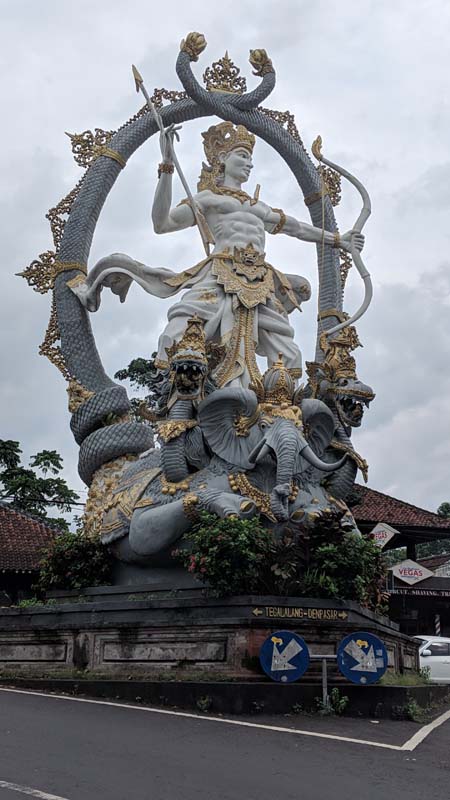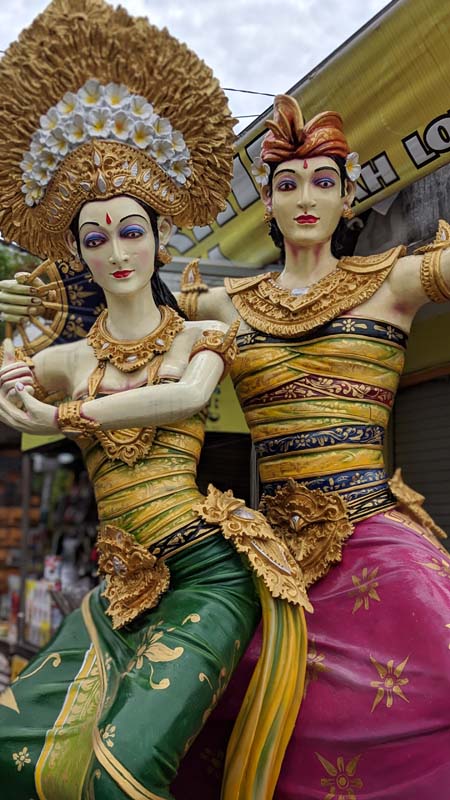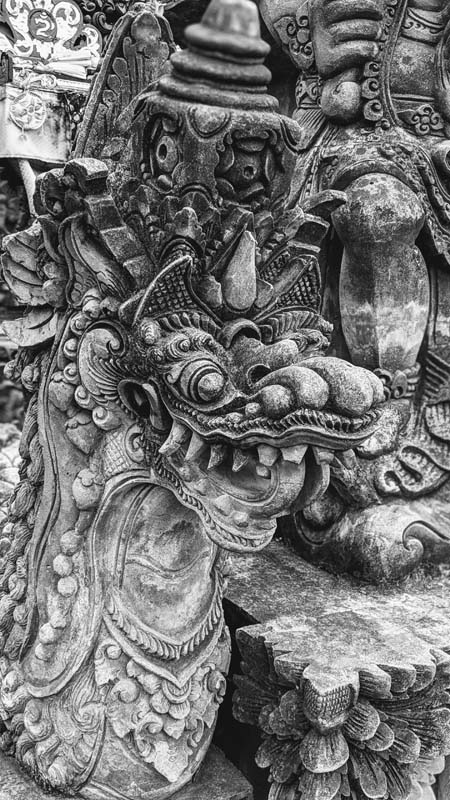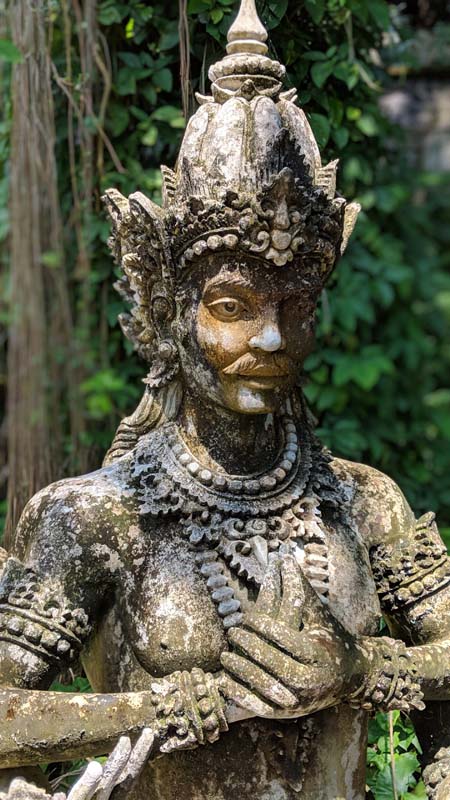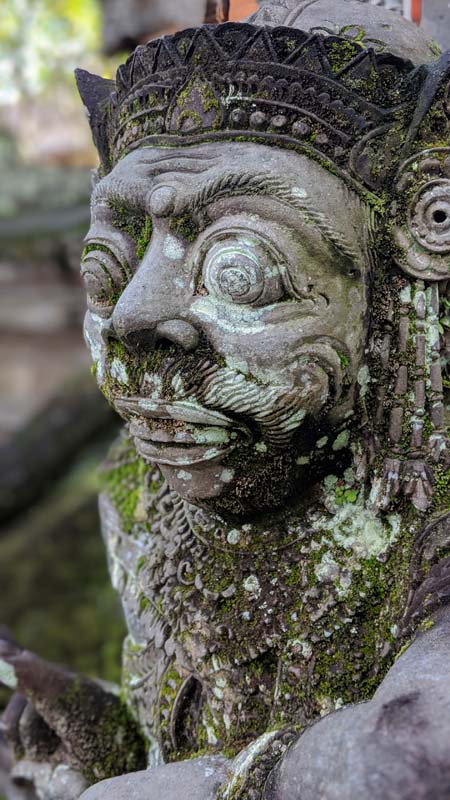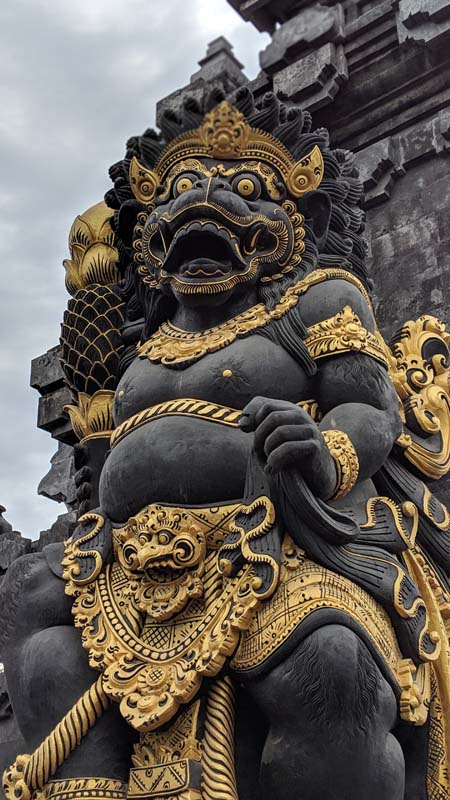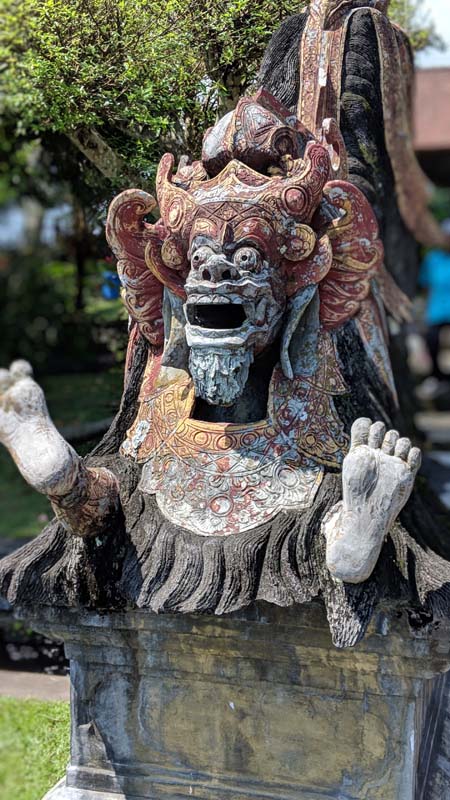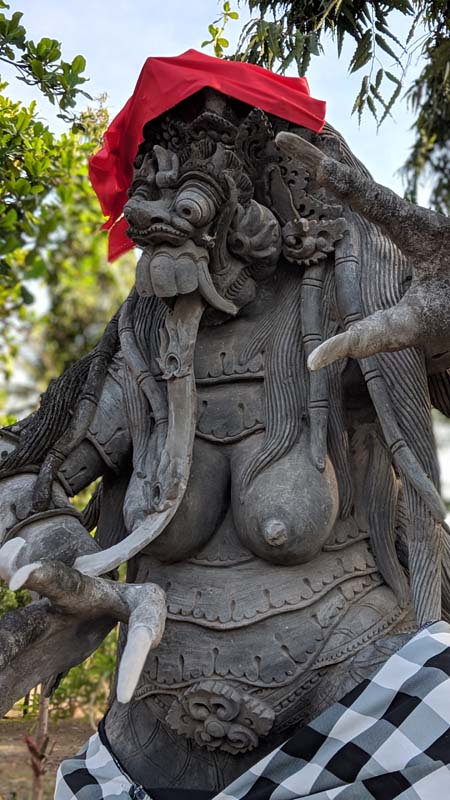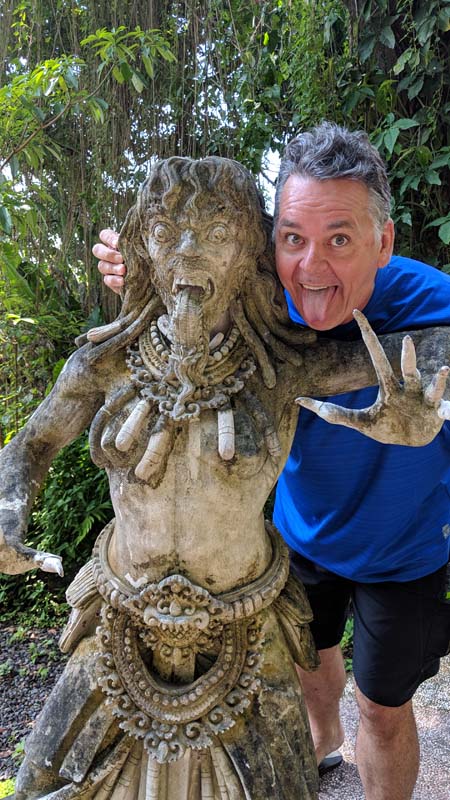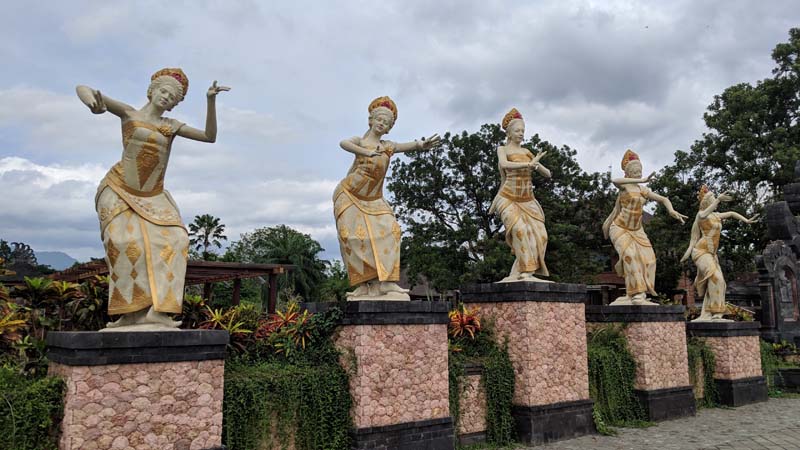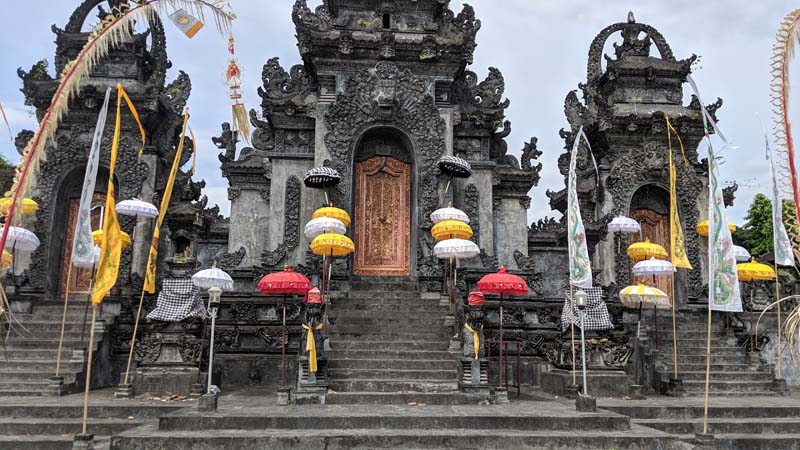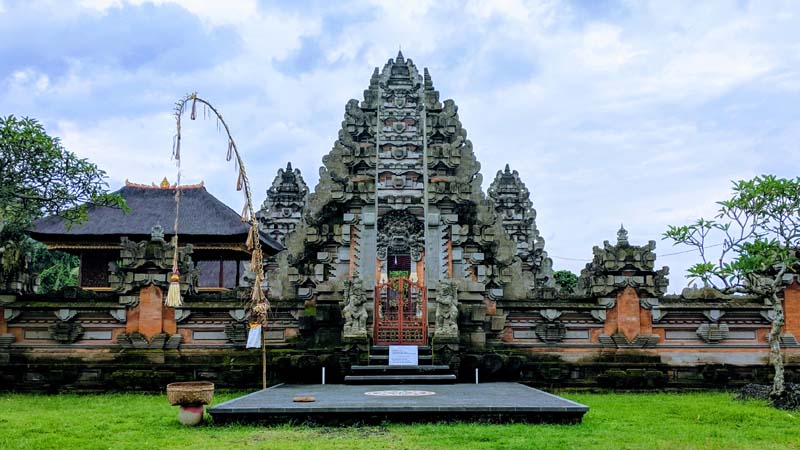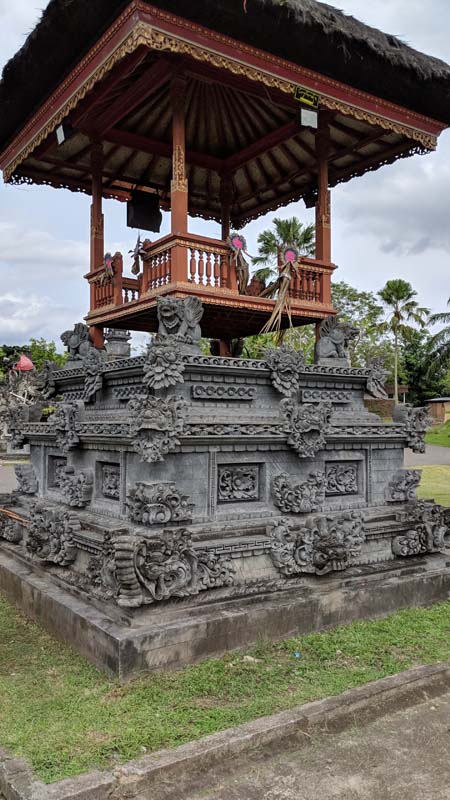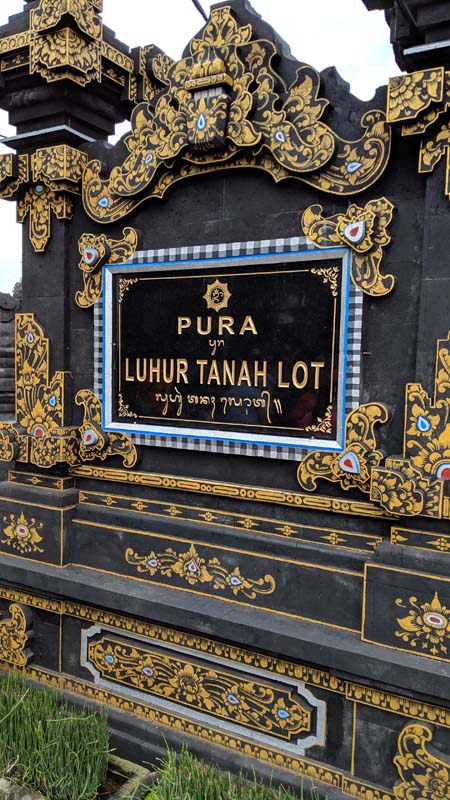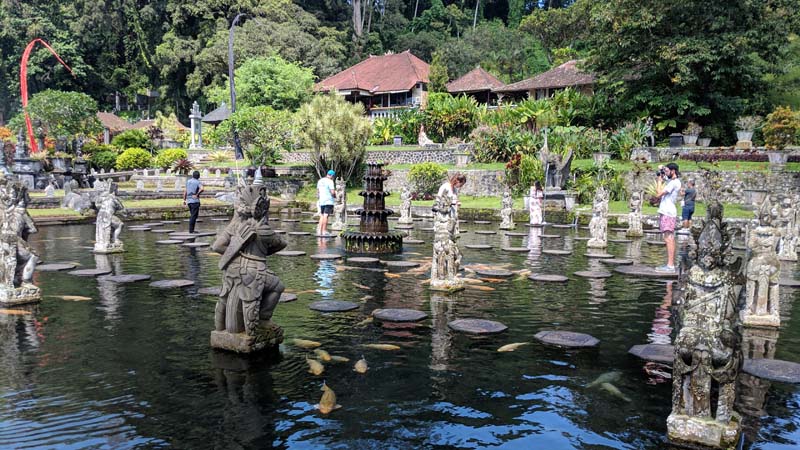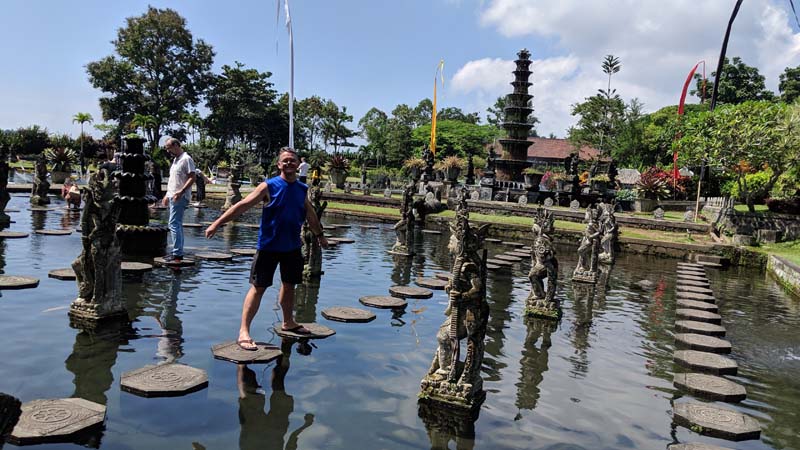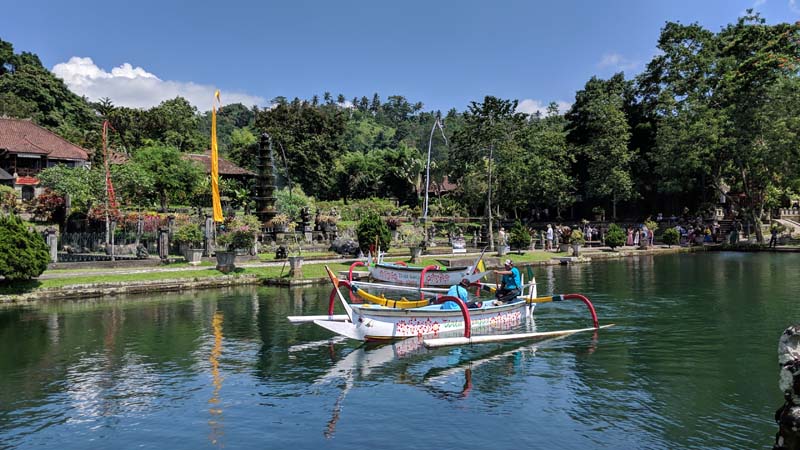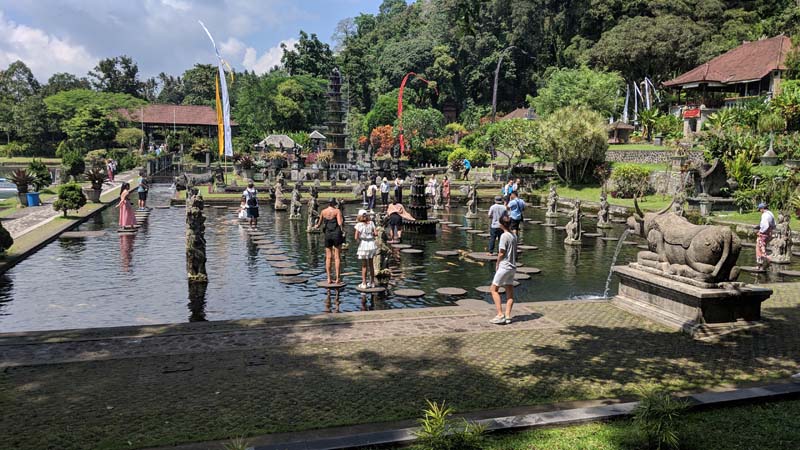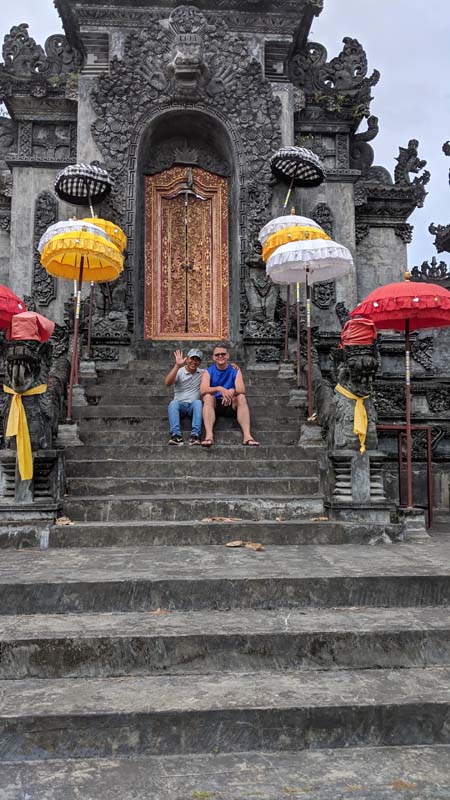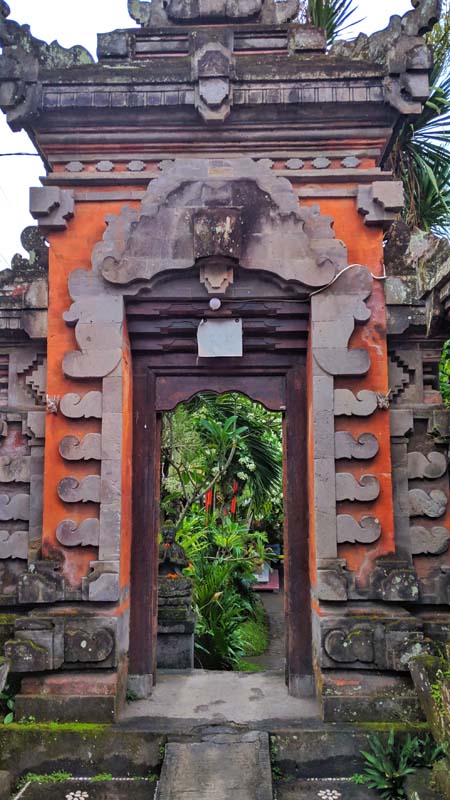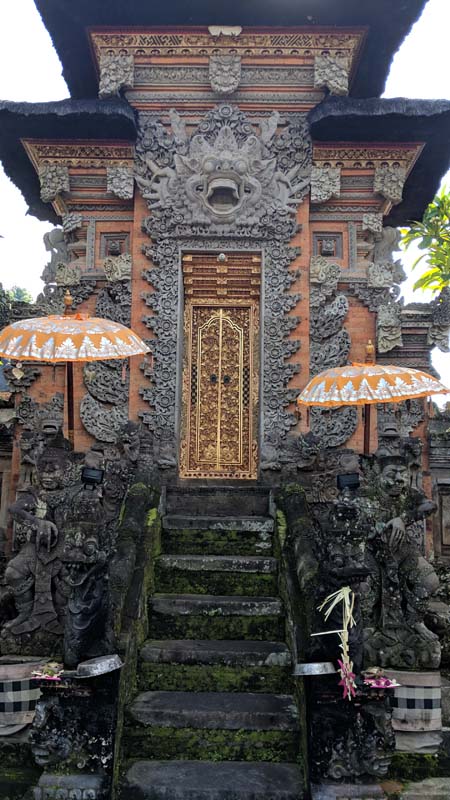Here we go with part one of my Beyond Belief Project, where I plan to experience and learn about a different religion every month for all of 2019. I’m a little late posting this one, as it was for January, but better late than never.
I spent nearly five week in Bali over the December/January period, so Balinese Hinduism seems like an obvious place to start. As part of Indonesia, a predominantly Muslim country, Bali is a religious outlier with nearly 85% of the island’s population identifying as Hindu. Its version of Hinduism is a little different to that traditionally found in India, which is polytheistic (believing in many gods), and it has quite a different feel to the other Muslim parts of Indonesia. Balinese Hinduism claims to be monotheistic, with only one god, although it seems to me that in practice this is not always the case, based on so many different statues I saw everywhere. There were statues of Vishnu and Ganesha and many, many others that I didn’t recognise, so I’m not totally sure how the monotheistic thing applies.
As used to be the case in India, there is a caste system in place in Bali, with priests and holy people (mostly men) called the Brahmanas at the top. Below that are the Satrias, Wesias and Sudras. The Sudras are the common class of people, and make up 90% of the population – these are your farmers, workers, etc. There are all kinds of specific rules and conventions that get applied to you depending on what caste you belong to. For example, the Sudra caste are given a name based on their birth order – first born is named Wayan, Putu or Gede. The second born is named Made or Kadek, the third goes by Nyoman or Komang, and the fourth is named Ketut. If a family has more than four children, the cycle repeats and the next ‘Wayan’ may be called Wayan Balik, which loosely translates to ‘another Wayan’. I met a lot of people with these names!
You also can’t miss the temples in Bali; they are absolutely everywhere. In fact, as well as the really big major temples, each area or village has several mid-sized temples serving the locals, and most people’s houses even have a small temple within the family compound. You honestly cannot walk more than a few hundred metres without seeing a temple. At the temples you see lots of offerings being made all the time, giving thanks to the god(s), and praying for good luck. The Balinese people seem to be deeply spiritual, and the culture is fairly traditional in its expectations. There are so many rules about how life should work, defining the different roles that men and women take on within society, how the structures of marriage and family should work, how lineage is passed down, and so on. The expectations of what men and women are supposed to be and do seem quite conservative (to me) but they are clearly very entrenched and valued by the Balinese people.
As I mentioned, you see offerings everywhere! Known as Canang sari, these are usually small baskets woven from strips of palm leaves filled with rice, flowers, incense or other things, and left out in front of houses, shops, temples, beaches, in fact everywhere that needs blessing. One morning while I was in Ubud, I went to get on my scooter and there was an offering sitting on the handlebars of my bike, and every other bike in the street. These offerings have great importance and happen several times a day, and are mostly managed by the women. They are offered every day as a form of thanks for the peace given to the world. The philosophy behind the offering is self-sacrifice in that they take time and effort to prepare. I was talking to one of my AirBNB hosts who said that they go through about 50 of these offering baskets every day. They get put in front of pretty much everything, and there are times when you literally have to step over bunches of them in the streets. They are obviously really important to the people and their beliefs.
One of the more major temples I visited was Tanah Lot, a spectacularly beautiful temple on the west coast of Bali. It’s built on a rocky outcrop that juts into the ocean but at low tide, you can wade across the water to the actual temple. There you can, for a small donation, get a blessing from the holy men. You need to wash your hands and feet, then they stuck rice onto your forehead. No idea what the purpose it, but they all seemed pretty reverent about it. I would have liked to have explored the actual temple but it was closed off to the public.
I happened to be in Bali during two of the biggest religious festivals of the year, Galungan and Kuningan. During this time, the temples get dressed up, there are big baskets of offerings being given, flowers are used to decorate the temples, etc. All the statues get dressed up in black and white checkered sarongs. The streets get decorated with big bamboo poles. And the people gather together in the temples to celebrate, talk, play music, and give thanks. It’s all rather beautiful.
I visited a biggish local temple just outside Ubud during the Kuningan festival and stayed for about an hour just to watch what was going on there. The women sat gathered together in groups, all dressed in traditional costumes of a sarong and a traditional lace top. The men stayed in their groups, also dressed in sarongs and mostly white shirts. There was music being played on traditional instruments – mostly percussive instruments, so to an untrained ear it does tend to sound like a lot of banging and crashing noise – and although the banging can sound a bit random, the musicians all clearly knew what was coming next as they stayed in time and tempo and knew exactly when to vary the intensity of their contributions. Although I wore a sarong and tried to be discreet as I wandered around the temple, I felt a little conspicuous being there. People were very welcoming though. It was quite amazing to experience.
Another fascinating temple was Tirta Gangga, on the way up to Amed on the the north coast. I believe the name translates as Water Palace, and it was probably one of the most beautiful temples I saw. and quite different in style to the others. there were lots of statues everywhere, but the main feature was the beautiful waterways and ponds filled with fish.
One insightful moment I had about the effect of religion on the culture was when I was talking with the caretaker of another of my AirBNBs, a delightful Balinese woman named Patliany. I mentioned to her how much I liked the villa I was staying in and how nice the layout of the space was. She laughed and said she had just had a conversation with another guest from an identical villa who was complaining that the open design was insecure and that he was concerned that people would be able to break in and steal his belongings. Patliany said to him “This is Bali. We are Hindu and we believe in karma. Nobody is going to steal your things.” (Ironically, the guy complaining was from India, and also a Hindu!)
That really summed up a lot to me about the impact that Hinduism has on these people. There is a genuine sense of kindness and helpfulness from the Balinese people that, I think, largely stems from this idea of karma… that whatever you do to other people and however you treat other people, it will eventually come back to you. The Balinese have a beautiful spirit, and I can’t help but think their Hindu beliefs about life and the world play an important role in the way they think and act.
The other interesting fun fact I learned about the way Hindu beliefs influence the culture was with the doorways. Balinese doors often have a series of steps that lead up to the entryway, and as you step through the door, there are more steps going down the other side. Basically, you have to climb up and down to go through a door. It struck me as somewhat odd… my western brain, trained to always aim for efficiency above all else, thought “why not just have no steps up and no steps down, so you can just walk through the door easily?” Apparently these steps are symbolic of the Hindu belief that everything in life involves some kind of struggle and reward. To get through the doorway, you have to climb up – the struggle – and then go down – the reward. Once I learned this, I noticed it everywhere. (I also didn’t see many people in wheelchairs either!)
So there you go, that’s my experience with Balinese Hinduism. Stay tuned for next month where I pick another religion to check out!
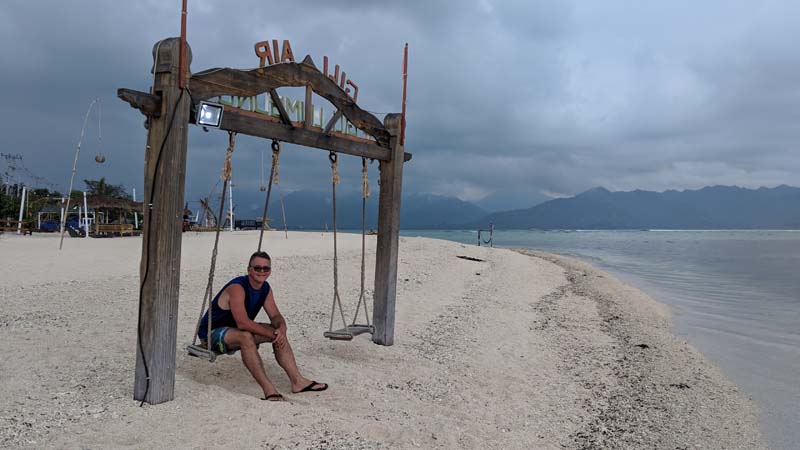
![]() January – Balinese Hinduism by Chris Betcher is licensed under a Creative Commons Attribution 4.0 International License.
January – Balinese Hinduism by Chris Betcher is licensed under a Creative Commons Attribution 4.0 International License.



